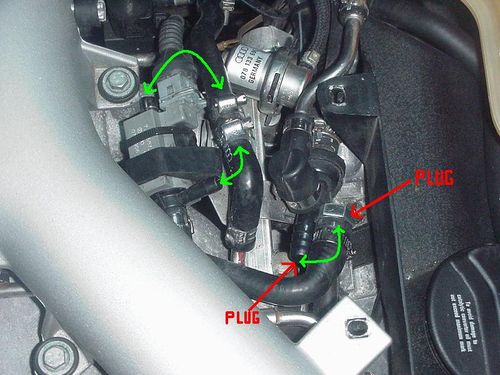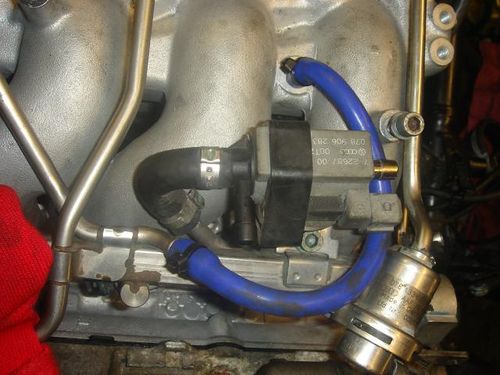N249
The N249 valve controls the opening of the diverter valves under certain part throttle conditions where the ECU thinks the intake track requires recirculation.
Common problems
A failing N249 can produce odd boost behavior, especially at part throttle.
Bypass
Purpose
The benefits are due to the increased DV responsiveness associated with the reduced restriction of the control pressure signal to the DV that results from removing the N249. However, the ECU cannot open the DV under certain conditions without the N249 active in the DV control vacuum signal circuit. For example, with the N249 active, the ECU opens the DV during light load cruise to reduce throttle pumping losses and increase fuel economy. In addition, the ECU employs the vacuum stored in the vacuum bottle to open the DV via the N249 even when the manifold pressure is positive above ambient air pressure, when needed.
Traditional DV control signals are directly connected to the manifold downstream of the throttle valve, so the added functions provided by the N249 are not essential.[1]
How to
Reroute the a vacuum line directly from the intake manifold to the diverter valves. If you're keeping the EVAP canister you'll need to route from the T-fitting to the diverter valves. To prevent the ECU from throwing a CEL the N249's electrical connector is simply kept connected.
With early intake manifold:
Later intake manifold:
Removal
To remove the N249 entirely will require disabling the DTC in the ECU.
References
Additional

